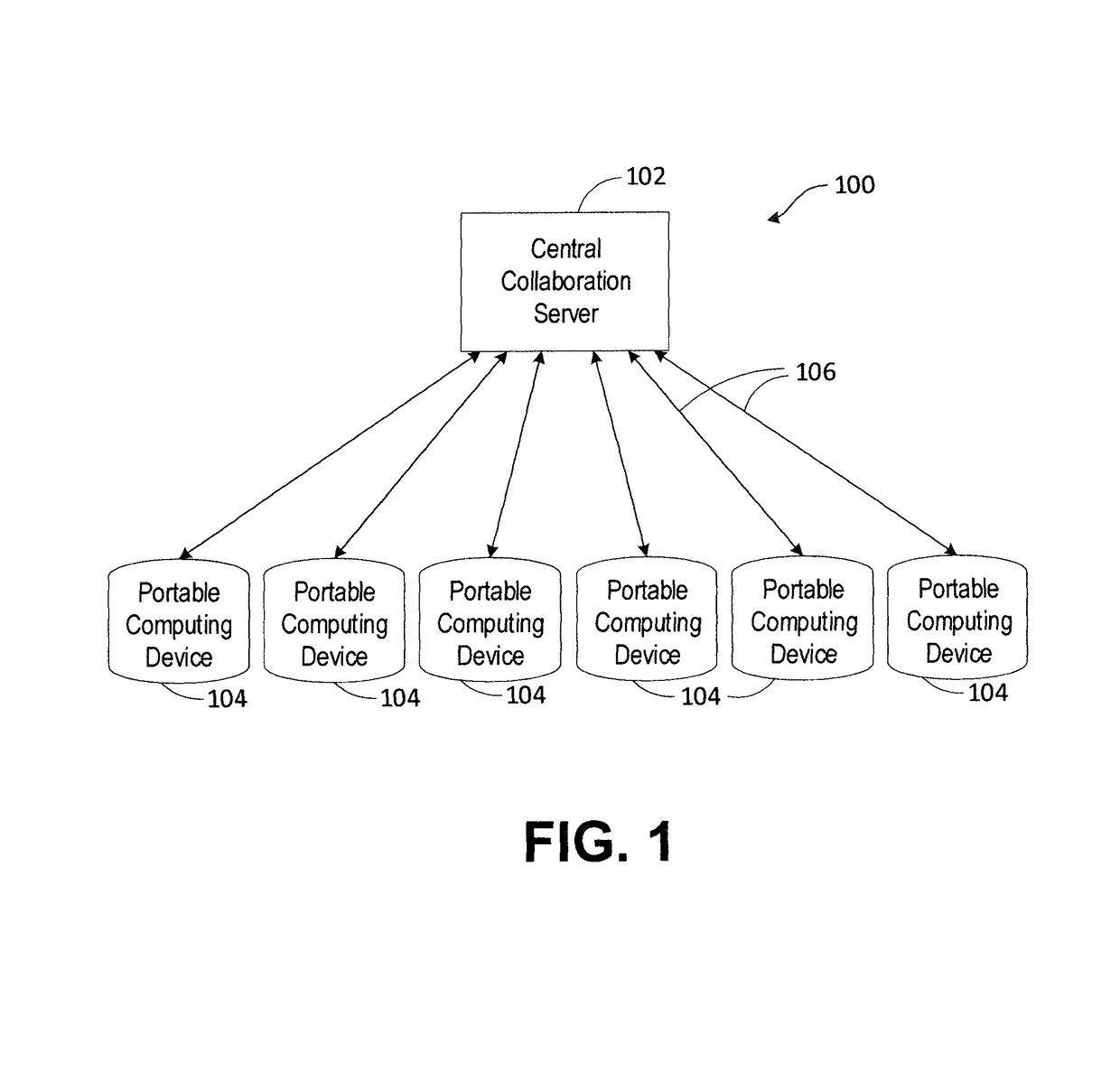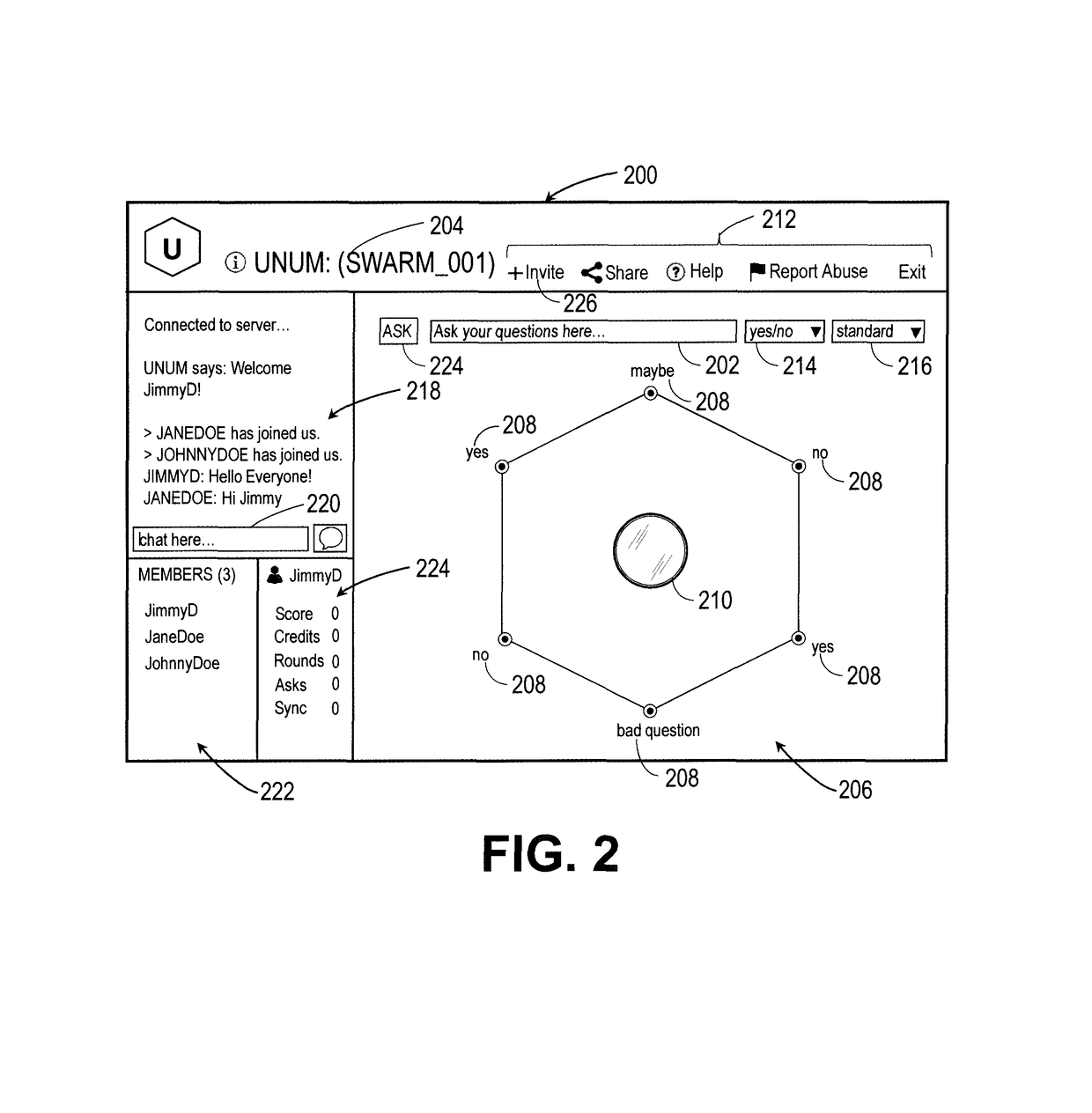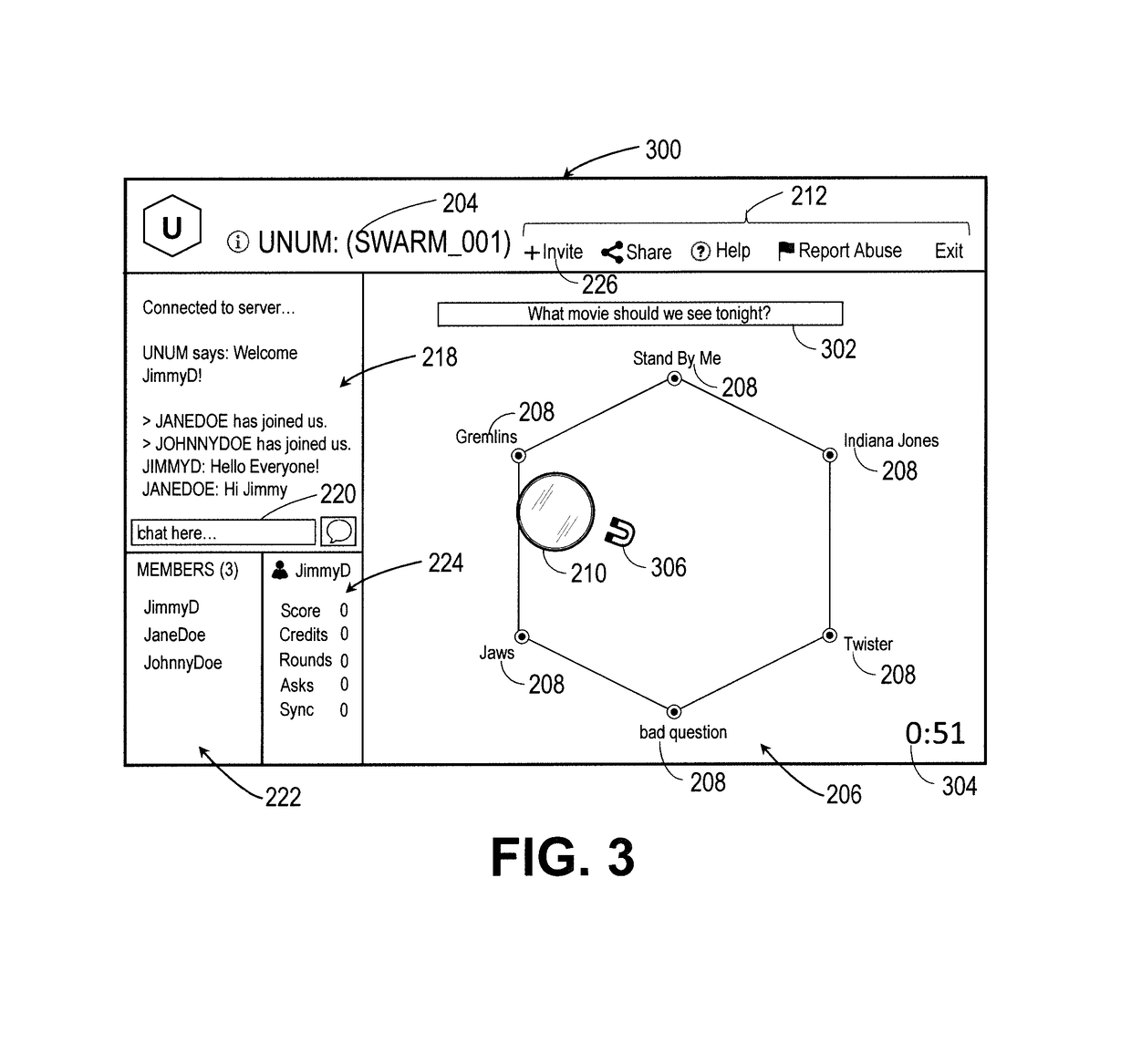Methods for analyzing decisions made by real-time collective intelligence systems
a collective intelligence and decision-making technology, applied in the field of collaborative intelligence, can solve the problem of not providing unique tools and infrastructur
- Summary
- Abstract
- Description
- Claims
- Application Information
AI Technical Summary
Benefits of technology
Problems solved by technology
Method used
Image
Examples
second embodiment
[0178]With respect to FIG. 13, the method is described that generates faction data but does not always accurately reflect the faction representation. FIG. 14 shows the method of generating faction data which can more accurately reflect faction representation using a novel method.
first embodiment
[0179]Referring next to FIG. 12, a flowchart for a method of faction determination is shown in FIG. 12. In related FIG. 13, the target areas 900, 1000, 1100 of FIGS. 9-11 are shown including faction spatial regions in accordance with the method of faction determination of FIG. 12. Shown are the pointer 210, the plurality of magnet icons 306, the answer choices 208, the plurality of selection targets 902, 904, 906, 908, 910, 912, a first Faction Associated Spatial Region (FASR) 1300, a second FASR 1302, a third FASR 1304, a fourth FASR 1306, a fifth FASR 1308, a sixth FASR 1310, and a plurality of vertex angles 1312.
[0180]The method for determining faction analysis data is described wherein the CCS 102 is configured to define a plurality of spatial regions, each spatial region associated with a unique one of the plurality of possible factions that user can join if pulling towards one of the plurality of available answer choices 208. These regions are called Faction Associated Spatial...
PUM
 Login to View More
Login to View More Abstract
Description
Claims
Application Information
 Login to View More
Login to View More - R&D
- Intellectual Property
- Life Sciences
- Materials
- Tech Scout
- Unparalleled Data Quality
- Higher Quality Content
- 60% Fewer Hallucinations
Browse by: Latest US Patents, China's latest patents, Technical Efficacy Thesaurus, Application Domain, Technology Topic, Popular Technical Reports.
© 2025 PatSnap. All rights reserved.Legal|Privacy policy|Modern Slavery Act Transparency Statement|Sitemap|About US| Contact US: help@patsnap.com



